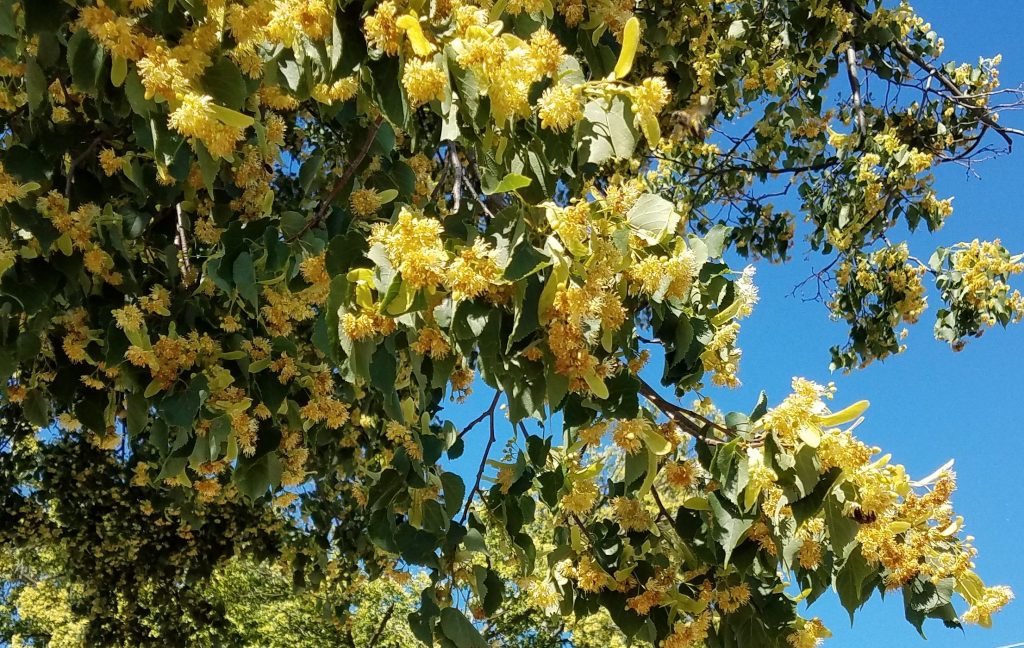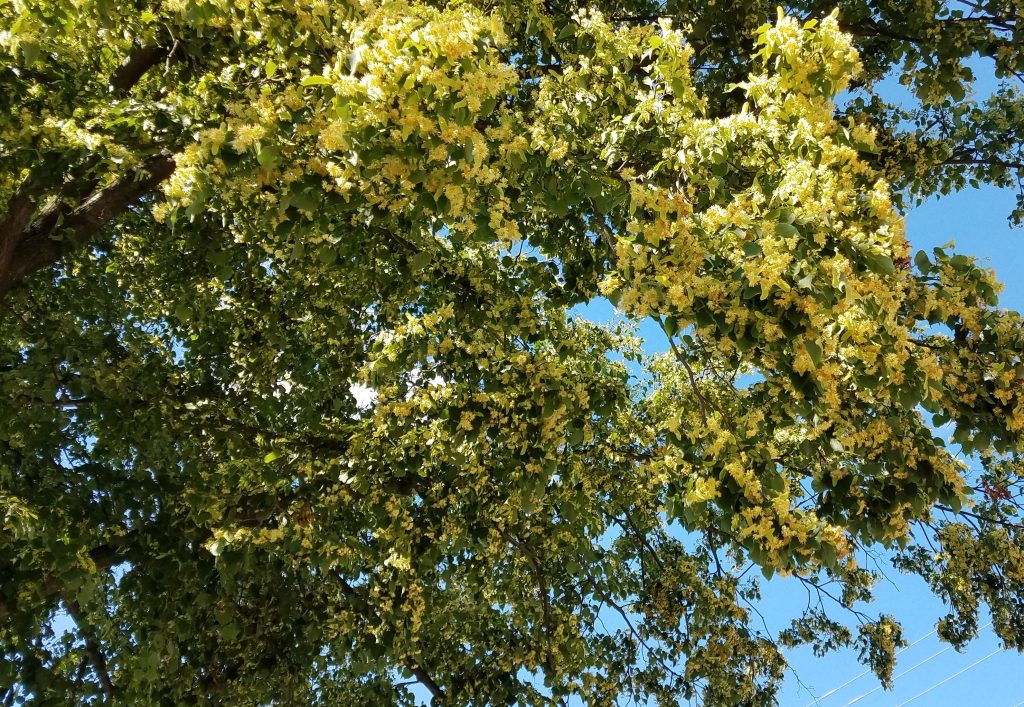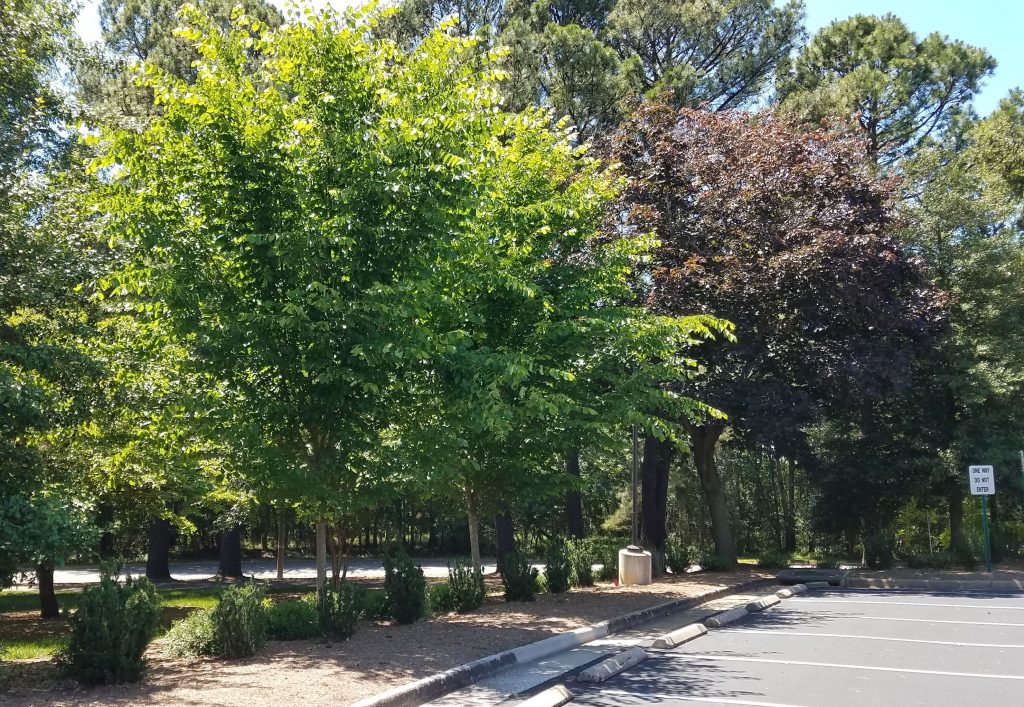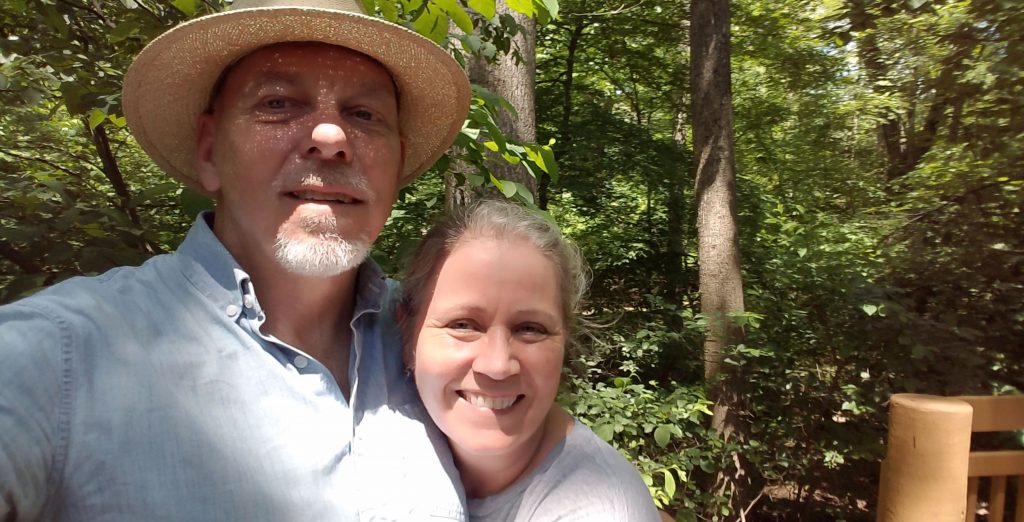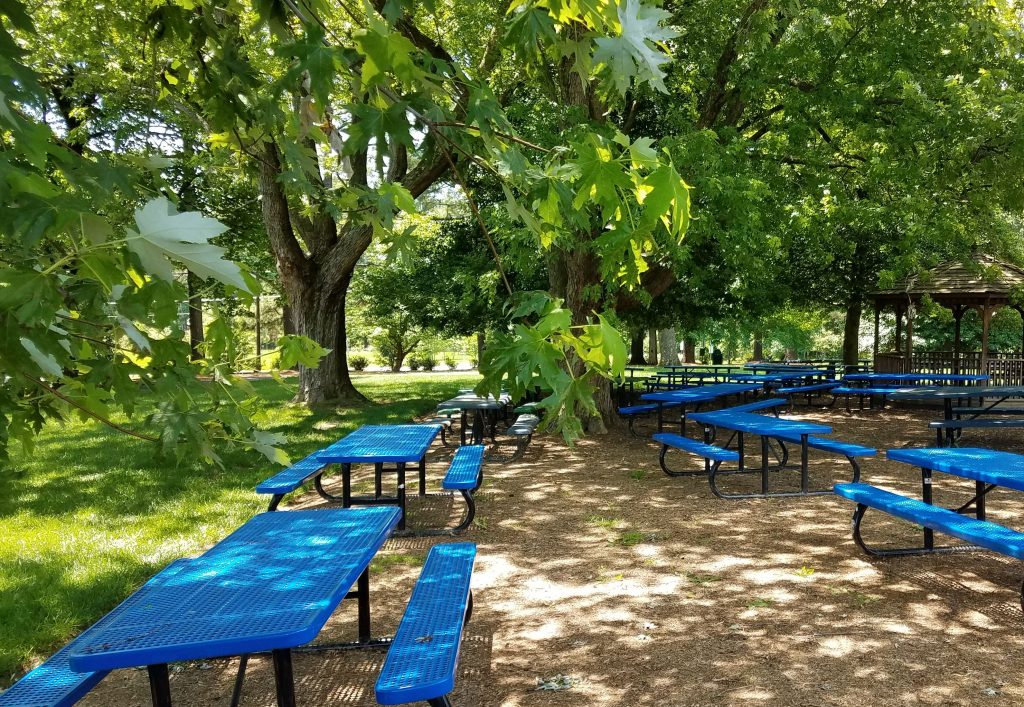I have been doing a lot of walking lately. Weather is nice and I have a lot of audio books. My book now is “The Open Society and its Enemies”, a classic of the philosopher of science Karl Popper. It is maybe too detailed, but well worth it. My method is to walk to Navy Federal, where I met CJ.
Spring has turned to summer in Virginia, but it is still not too hot.
The lindens are blooming. I love the scent of them. It is elusive. If you get too close, you cannot smell them as well as when you catch the wonderful smell at a distance in the wind. Linden are the European version of basswood. Our American basswood is bigger, but with less prominent flowers. Bees love both. There is even a special kind of honey, called basswood honey from the pollen they gather this time of year.
Linden are common in Germany and Poland. In German they call them linde and in Poland Lipa and they are loved in both places. There is great cultural significance. One of the most iconic boulevards in Berlin is called Unter den Linden – Under the Linden. When I was in Poland, I visited an ancient linden tree, under which the Polish (and American) patriot Thaddeus Kosciusko rested after defeating the Russians with his peasant army at Racławice. I am not sure of those details and ask Iwona Sadecka and Elżbieta Konarska to confirm my ageing memory.
In central Europe lindens bloom a little later than they do in Virginia, more in July than in June. The Poles even named their month we call July after it – Lipiec.
Each year the linden blooms bring back wonderful memories. Our sense of smell is very primal. It goes right to the soul. I think I am even more fond of them because scent is so elusive and ephemeral.
My first picture is Chrissy and me on Ward’s Walk at Navy Federal. Next are those linden blooms. Picture #3 shows a couple American elms, probably the “Princeton” variety, resistant to Dutch elm. After that is the picnic area at Navy Federal. Chrissy and I had a picnic lunch there. Last are some ash tree near my house. They have treated those trees to prevent the emerald ash borer and they are some of the few still extant.


